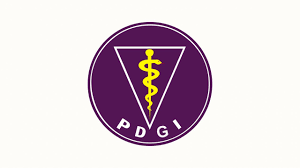The Role of Suku Anak Dalam (SAD) Malaria Control Efforts in Jebak Village, Jambi Province, Indonesia
DOI:
https://doi.org/10.26630/jk.v16i2.4972Keywords:
Environmental health, Mosquito nets, Public health programAbstract
Malaria is a significant public health problem in various regions, especially in developing countries. Suku Anak Dalam (SAD) is a tribe that lives in the jungle by foraging for forest products. SAD always lives in the forest and carries out activities such as hunting and living in the wilderness or in the garden. This research aims to highlight the importance of strengthening the role of SAD in malaria control efforts through a sustainable and integrated approach in public health programs. This research method is an observational type with an ecological study method, a cross-sectional design was carried out by involving interviews and observational, data were analyzed using the chi-square statistical test, this study as a population is the community living in the Senami forest of Jebak village as many as 40 people as a sample and the total population, this study evaluated knowledge, attitudes, and practices of malaria control. The results show that SAD has a varied understanding of malaria, with most showing high concern for control efforts. The active involvement of SAD in counseling and the implementation of preventive practices, such as the use of mosquito nets and antimalarial drugs, has increased awareness and reduced the prevalence of this disease. However, challenges such as limited access to health resources and environmental changes that affect malaria vectors remain obstacles that must be overcome.
References
Aida, P.N., Astuti, F.D. and Azka, A. (2023). Keanekaragaman Spesies dan Bionomik Anopheles spp. pada Daerah Endemis Malaria di Indonesia. ASPIRATOR - Journal of Vector-Borne Diseases Studies, 14(2). 89–104. https://doi.org/10.58623/aspirator.v14i2.11.
Aria Arina, C. et al. (2023). Community Empowerment in Household Clean and Healthy Behavior (PHBS), especially for Prevention and Early Action on Infectious Diseases and Cerebrocardiovascular Diseases in Pekan Village, Tanjung Beringin District, Serdang Bedagai. Pengabdian Kepada Masyarakat, 8(2), pp. 852–860. https://doi.org/10.32734/abdimastalenta.v8i2.9589
Arisco, N.J. et al. (2024). Ecological change increases malaria risk in the Brazilian Amazon. Proceedings of the National Academy of Sciences of the United States of America, 121(44). https://doi.org/10.1073/pnas.2409583121.
Athalia, Z. F., Rombot, D. V., & Monintja, T. C. N. (2023). Pengetahuan, sikap, dan tindakan masyarakat tentang malaria di Lingkungan VI Kelurahan Taas Kecamatan Tikala Kota Manado. Jurnal Kedokteran Komunitas dan Tropik, 477-482.
Benjamin-Chung, J. et al. (2024). Extension of efficacy range for targeted malaria-elimination interventions due to spillover effects. Nature Medicine [Preprint]. https://doi.org/10.1038/s41591-024-03134-z.
Caldas, R.J.C. et al. (2023). Incidence Of Malaria Among Indigenous People Associated With The Presence of Artisanal Mining. Revista Gaucha de Enfermagem, 44. https://doi.org/10.1590/1983-1447.2023.20220098.en.
Castellanos, A., Chaparro-Narváez, P., Morales-Plaza, C. D., Alzate, A., Padilla, J., Arévalo, M., & Herrera, S. (2016). Malaria in gold-mining areas in Colombia. Memorias do Instituto Oswaldo Cruz, 111(1), 59-66. https://doi.org/10.1590/0074-02760150382.
Chow, W.K. et al. (2023). Seasonal Assessment On The Effects Of Time Of Night, Temperature And Humidity On The Biting Profile Of Anopheles Farauti In North Queensland, Australia Using a Population Naive To Malaria Vector Control Pressures. Malaria Journal, 22(1). https://doi.org/10.1186/s12936-023-04495-5.
Daily, J. P., Minuti, A., & Khan, N. (2022). Diagnosis, treatment, and prevention of malaria in the US: a review. Jama, 328(5), 460-471. https://doi.org/10.1001/jama.2022.12366.
Dinas Kesehatan Provinsi Jambi. (2022). Profil Dinas Kesehatan Propinsi Jambi Tahun 2022. Jambi.
Guntur, R.D., Kingsley, J. & Amirul Islam, F.M. (2022). Malaria treatment-seeking behaviour and its associated factors: A cross-sectional study in rural East Nusa Tenggara Province, Indonesia. PLoS ONE, 17(2 February). https://doi.org/10.1371/journal.pone.0263178.
Hasyim, H. et al. (2023). Risk Factors Of Malaria Transmission In Mining Workers In Muara Enim, South Sumatra, Indonesia. Scientific Reports, 13(1). https://doi.org/10.1038/s41598-023-40418-9.
Khofifah Sidik, N., Asrina, A. and Syam, N. (2022). Perilaku Pencarian Pengobatan Penyakit Malaria Pada Masyarakat Kampung Muari Kecamatan Oransbari Kabupaten Manokwari Selatan. Window Of Public Health Journal, 3(4).
Lordemus, S. (2022). Does Aid for Malaria Increase with Exposure to Malaria Risk? Evidence from Mining Sites in the D.R.Congo. Oxford Bulletin of Economics and Statistics, 84(4). https://doi.org/10.1111/obes.12483.
Madayanti, S., Raharjo, M. and Purwanto, H. (2022). Faktor Risiko Yang Mempengaruhi Kejadian Malaria di Wilayah Distrik Jayapura Selatan Kota Jayapura. Jurnal Kesehatan Lingkungan Indonesia, 21(3). https://doi.org/10.14710/jkli.21.3.358-365.
Obeagu, E. I., & Obeagu, G. U. (2024). Understanding Hematocrit Fluctuations in HIV-Malaria Coinfection for Improved Management. Elite Journal of Public Health, 2(1), 22-34.
Pasangka, O., Bre Boli, E. and Astuti, D. (2023). Edukasi Pencegahan, Pemeriksaan, Dan Pengobatan Penyakit Malaria Di Puskesmas Abepura. Ebamukai, 1(1).
Salas, D. et al. (2021). Malaria In Populations With Mining Occupation, Colombia, 2012-2018. Biomedica, 41. https://doi.org/10.7705/BIOMEDICA.5899.
Sangadjisowohy, I. & Sunuh, H.S. (2023). Penggunaan Obat Nyamuk dan Kejadian Malaria di Kelurahan Sangadji Kota Ternate Use of Mosquito Repellent and the Incidence of Malaria in Sangadji Village, Ternate City. Jurnal Promotif Preventif, 6(2). http://journal.unpacti.ac.id/index.php/JPP.
Shayo, E.H. et al. (2015). Social Determinants Of Malaria And Health Care Seeking Patterns Among Rice Farming And Pastoral Communities In Kilosa District In Central Tanzania. Acta Tropica, 144. https://doi.org/https://doi.org/10.1016/j.actatropica.2015.01.003.
Siagian IET, Pijoh VD, Turalaki GLA (2020). Perilaku masyarakat Desa Kolongan Kecamatan Talawaan Kabupaten Minahasa Utara terhadap penyakit malaria di masa pandemi COVID-19. BIOVERITAS J Biol, 01(02).
Sugiarto, S.R. et al. (2022). The History And Current Epidemiology Of Malaria In Kalimantan, Indonesia. Malaria Journal, 21(1). https://doi.org/10.1186/s12936-022-04366-5.
Susilawati and prayatna, salsabila (2023). Analisis Faktor Yang Berpengaruh Terhadap Kejadian Malaria Di Wilayah Pesisir Berdasarkan Teori Hl. Blum's Journal of Health and Medical Research, 3(3), pp. 235–241.
Terças-Trettel, A.C.P. et al. (2019). Malaria And Hantavirus Pulmonary Syndrome In Gold Mining In The Amazon Region, Brazil. International Journal of Environmental Research and Public Health, 16(10). https://doi.org/10.3390/ijerph16101852.
Ueno, T.M.R.L. et al. (2021). Socio-Epidemiological Features And Spatial Distribution Of Malaria In An Area Under Mining Activity In The Brazilian Amazon Region. International Journal Of Environmental Research And Public Health, 18(19). https://doi.org/10.3390/ijerph181910384.
Wantim, M.N. et al. (2021). The Utilisation Of Satellite Imagery And Community Perceptions To Assess The Impacts Of Sea Encroachment In The West Coast Of Cameroon At Limbe. Journal Of The Cameroon Academy Of Sciences, 16(3). https://doi.org/10.4314/jcas.v16i3.
Wetzler, E.A. et al. (2022). Changing Transmission Dynamics Among Migrant, Indigenous And Mining Populations In a Malaria Hotspot In Northern Brazil: 2016 to 2020. Malaria Journal, 21(1). https://doi.org/10.1186/s12936-022-04141-6.
Workineh L, Lakew M, Dires S, et al. (2021). Prevalence of Malaria and Associated Factors Among Children Attending Health Institutions at South Gondar Zone, Northwest Ethiopia: A Cross-Sectional Study. Glob Pediatr Heal, 8. https://doi.org/10.1177/2333794X211059107
Downloads
Published
Issue
Section
License
Copyright (c) 2025 Sukmal Fahri, Susy Ariyani

This work is licensed under a Creative Commons Attribution-ShareAlike 4.0 International License.
Authors who publish in this journal agree to the following terms:
- Authors retain copyright and grant the journal right of first publication with the work simultaneously licensed under a Creative Commons Attribution License (CC BY-SA 4.0) that allows others to share the work with an acknowledgment of the work's authorship and initial publication in this journal.
- Authors can enter into separate, additional contractual arrangements for the non-exclusive distribution of the journal's published version of the work (e.g., post it to an institutional repository or publish it in a book), with an acknowledgment of its initial publication in this journal.
- Authors are permitted and encouraged to post their work online (e.g., in institutional repositories or on their website) prior to and during the submission process, as this can lead to productive exchanges and earlier and greater citations of published work.











